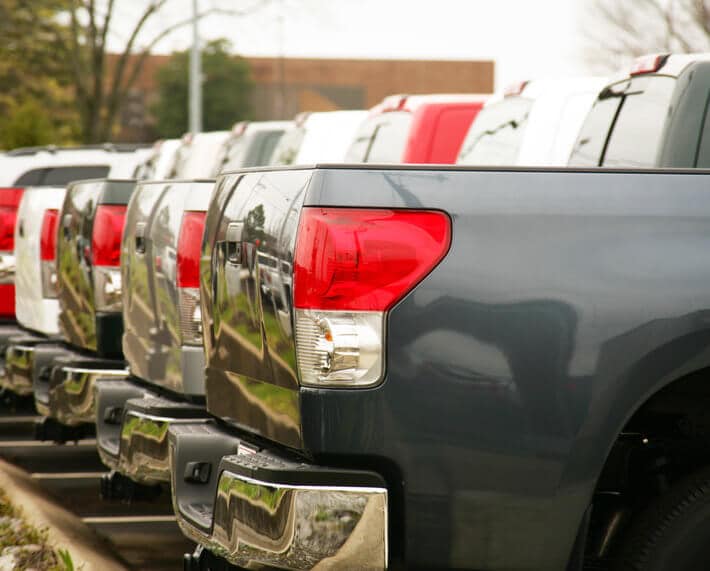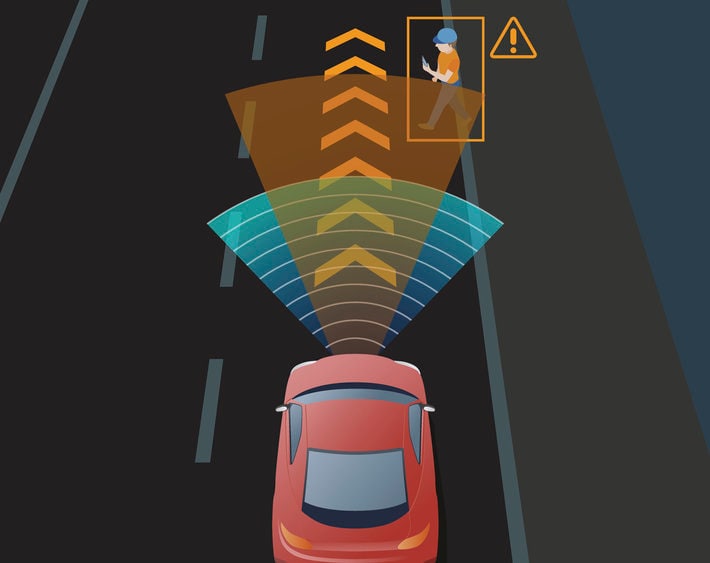If you’re looking into buying a truck, odds are you’ve got some pretty specific requirements. Unlike everyday cars, trucks tend to be used for heavy-duty driving and work. While figuring out financing options and scheduling test drives is important, it’s just as crucial to determine exactly what you’re looking for in a truck. After all, buying a truck is no small purchase. Before you hand over a good chunk of change for what you think is the truck of your dreams, use this 10-point checklist to make sure you've considered practically everything!
1. Price Tag
Create a budget before you start shopping. The most basic trucks can have price tags under $20,000, but more-equipped trucks can cost an upwards of $60,000. Your budget will help narrow down the options.
2. Towing and Hauling Capabilities
It’s important to know what kind of demands will be placed on your truck of choice. A compact pickup truck can only tow or haul a fraction of what a heavy-duty pickup truck can. For instance, a Toyota Tundra with a V8 engine can tow about 8,100 pounds, says AutoTrader. A Chrysler RAM 3500, on the other hand, can tow a whopping 30,000 pounds. Talk about a serious weight difference! What do you plan on towing or hauling?
3. Cab Size
Standard cabs have a single row of seats. Extended cabs have a back row and also offer you more storage space within the cab of your truck. A crew-cab truck has four doors, with a larger back row. Will you need to accommodate passengers on a pretty regular basis? If so, opt for a larger cab size.
4. Bed Size
The standard bed on a full-sized pickup is eight feet, but the bed size is shortened to about six feet if you want an extended cab and five feet with a crew-cab. You’ll have to determine how much space you will typically need. If necessary, you can invest in a fold-out bed extender as well.
5. Trim Level
Within the same year and model of trucks, manufacturers will produce different trim levels. These are essentially different versions of the same model truck. It’s important to understand the different trim levels, because they will have different features, equipment, and price points.
Pro-Tip: Are you looking at buying a used truck? Ask the owner or dealer if you can bring it to your nearest Firestone Complete Auto Care for a complete vehicle inspection. Our technicians can examine the truck's suspension, exhaust system, brakes, and more, to make sure they are in line with manufacturer specifications.
6. Engine Size
When it comes to determining the proper engine size for your truck, you’ll need to keep in mind both the amount of power you need as well as your desired fuel economy. A V4 engine in a compact pickup might be sufficient for your needs, while a V6 might be a great compromise between power and fuel economy. If you’re going to be working with heavier loads, a powerful V8 engine might be the one for you.
7. Axle Ratio
Manufacturers often offer the same model truck with multiple axle options. The axle ratio can affect your truck's fuel economy and performance, so it's something to consider when picking the best truck for your needs. A higher axle ratio will increase the amount of weight you can tow, but it will also decrease your fuel efficiency. If you plan on doing a lot of highway driving and aren't concerned with towing heavy loads, a standard axle ratio may be just fine for your needs.
8. Safety Features
Apart from your standard safety features, there are more high-tech safety features on the market than ever before. Consider things like blind spot warning systems, lane departure warning systems, and automatic braking systems. Make sure you’re aware of which features the truck comes with and which ones will cost extra.
9. Access
If you’re purchasing a truck with hopes of using it as a family vehicle, it’s a good idea to see if little ones (and pets!) can get in and out. Additionally, if you’re planning on regularly having people in the back seat, you should double check that there is plenty of room. Extended cabs are known for being pretty cramped.
10. Wheel Drive
The majority of trucks are rear-wheel drive, which helps the driver gain traction when hauling or towing. You may want a truck with four-wheel drive that can be activated when the terrain is slippery or rough. Another option is all-wheel drive, which doesn’t need to be activated or deactivated.
When you purchase a new truck, it'll likely come with the most basic set of tires – which may or may not be the most appropriate for your climate and driving style. Come check out your local Firestone Complete Auto Care’s complete inventory of light truck tires. We'll get you where you need to be, whether you're braving highway traffic or bumpy back roads. Choose from all-terrain, all-season, and maximum traction tires for your new truck. To make things even easier, you can get an easy, convenient quote for your next set of truck tires in an instant online!




